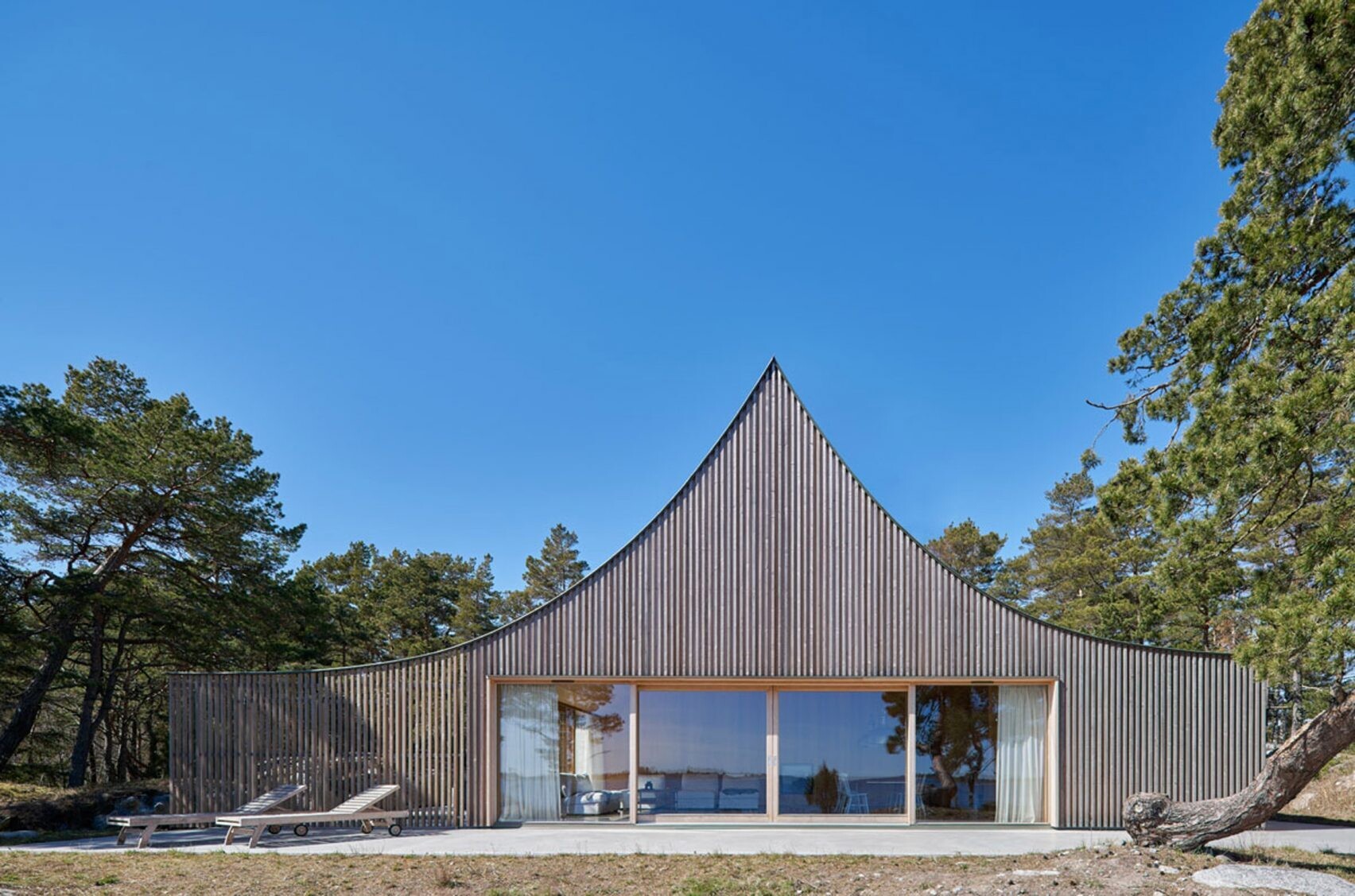
There’s camping, and then there’s this. On the small Swedish island of Krokholmen, a short boat ride from Stockholm, a family has swapped sleeping bags for cedar and canvas for glass. Designed by Tham & Videgård Arkitekter, their vacation home may look like a tent from afar, but step closer and it’s a masterclass in Scandinavian architecture, simple, serene, and perfectly in tune with the sea.
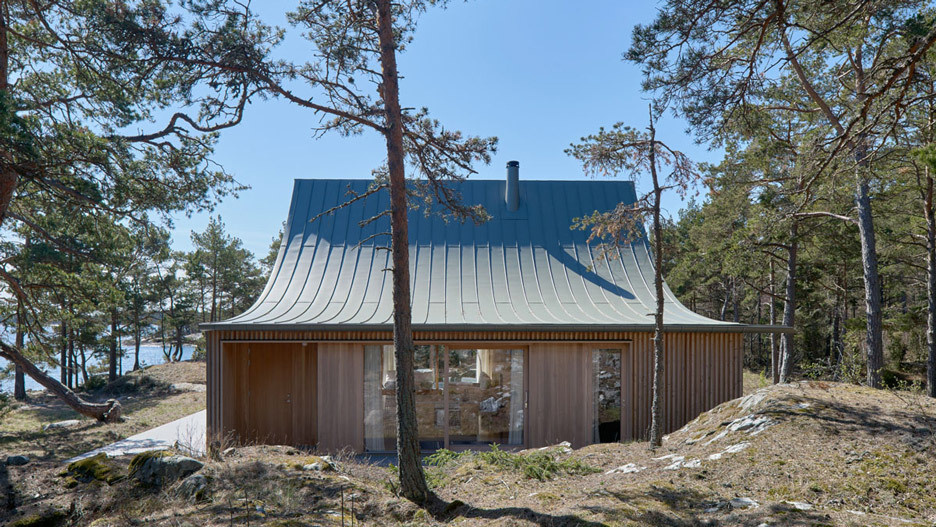
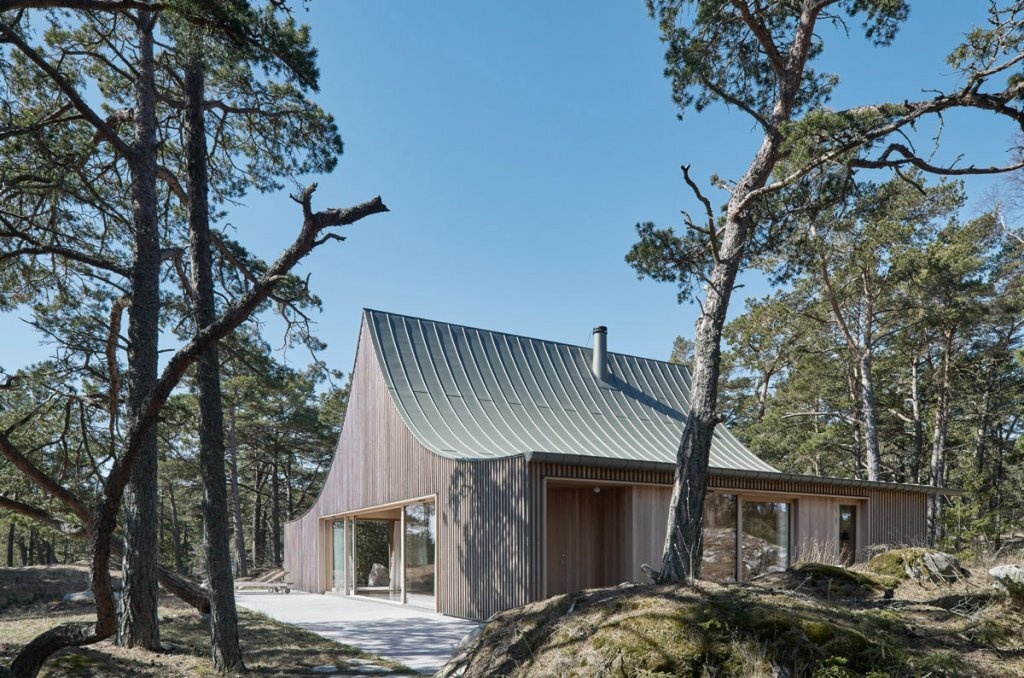
A house shaped by the landscape
Krokholmen is no tropical escape, it’s a rocky outcrop in Stockholm’s outer archipelago, where windswept pines cling to smooth stone. That’s exactly what drew the family here. They wanted a low-maintenance holiday home that embraced the outdoors but asked little in return. The architects responded with a single-level design that connects seamlessly with nature, opening up to the water on one side and tucking itself into the trees on the other.
The result is a structure that feels both grounded and open, as if it grew from the landscape itself. Its curved roof, part tent, part pavilion, creates an airy sense of shelter while allowing panoramic views of the Baltic Sea.
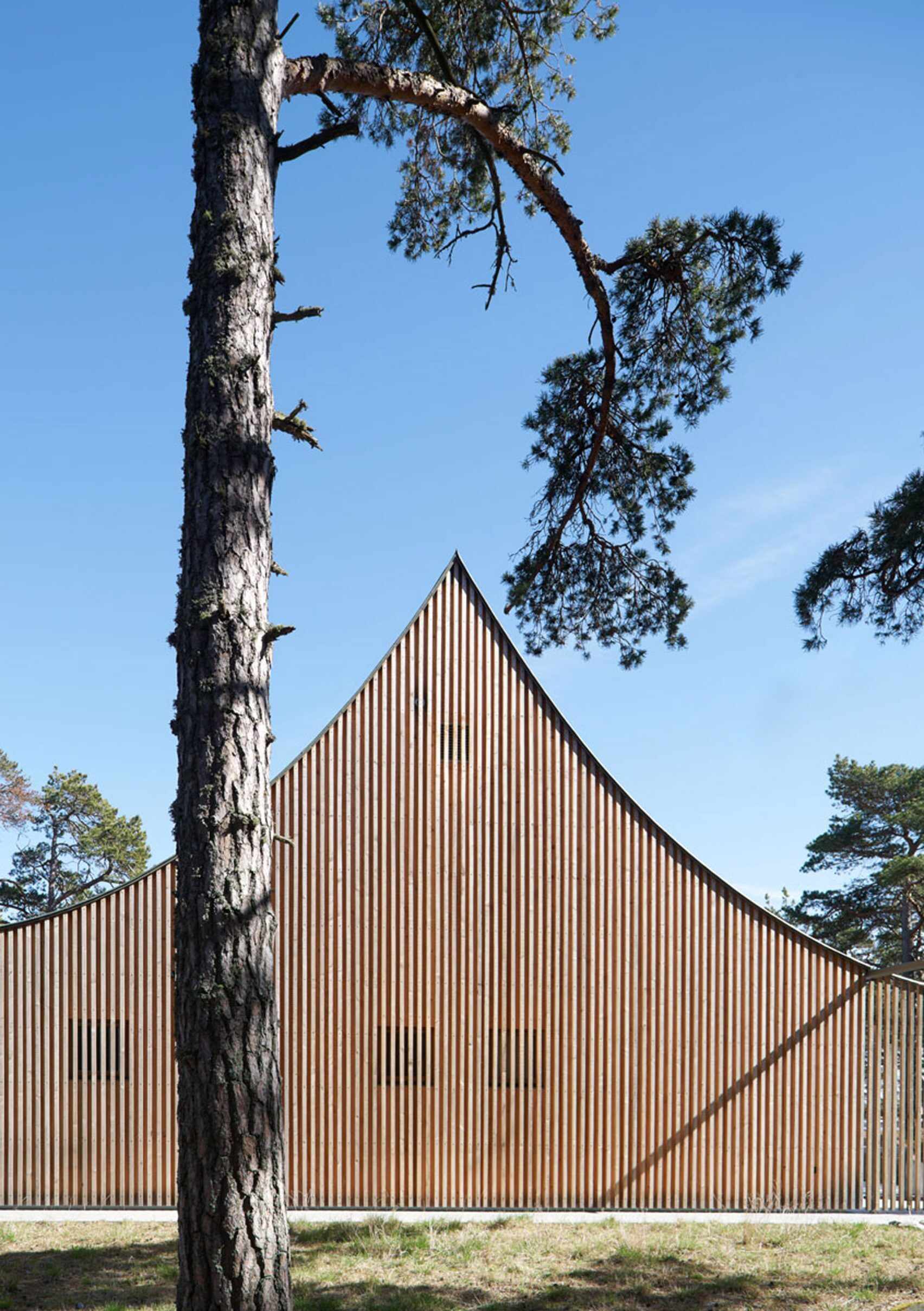
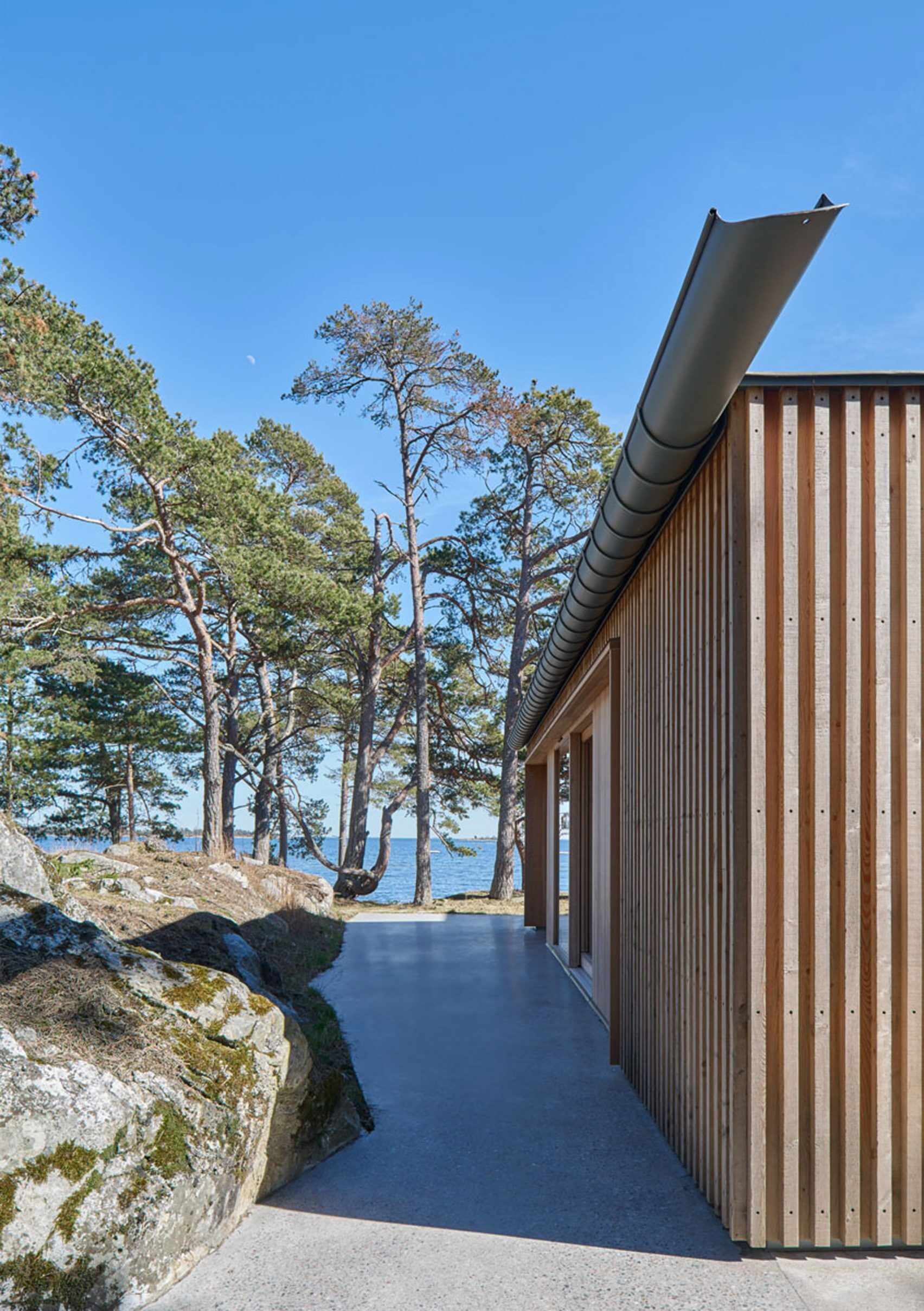
Cedar walls and sculptural light
At first glance, the exterior feels almost monastic. The cedar facade glows softly against the granite outcrops, aging gracefully in the salt air. Step inside, and the same warm timber continues throughout, wrapping every wall and ceiling in a golden hue.
The house’s most dramatic feature is its soaring, six-metre ridge height, a peak that gives the interior a tent-like feel, without a single rope in sight. Daylight floods in from three directions, and when the sliding glass doors are opened, the living room becomes an outdoor pavilion.
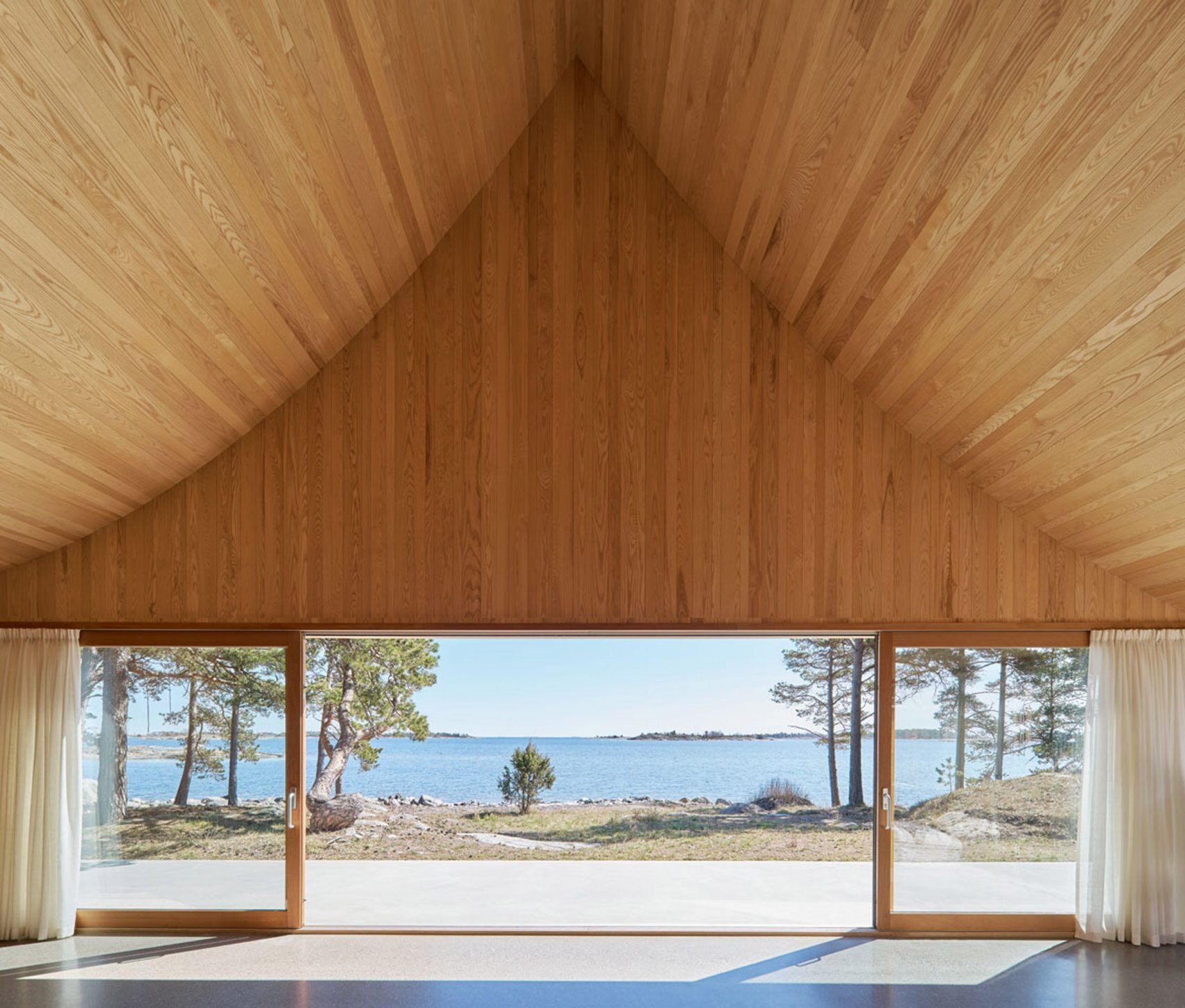
Living with the elements
The main living area spills onto three terraces, each with its own personality. One faces east toward the open sea, offering unbroken views all the way to the Almagrundet lighthouse. Another is tucked to the south, sheltered from the island’s brisk winds, perfect for long summer dinners. The third sits to the side, a quiet spot for coffee and calm.
Inside, the fireplace sits at the heart of the plan, both a source of warmth and a subtle divider between the social and private spaces. It’s easy to imagine the family gathered here in winter, watching snow fall beyond the glass.
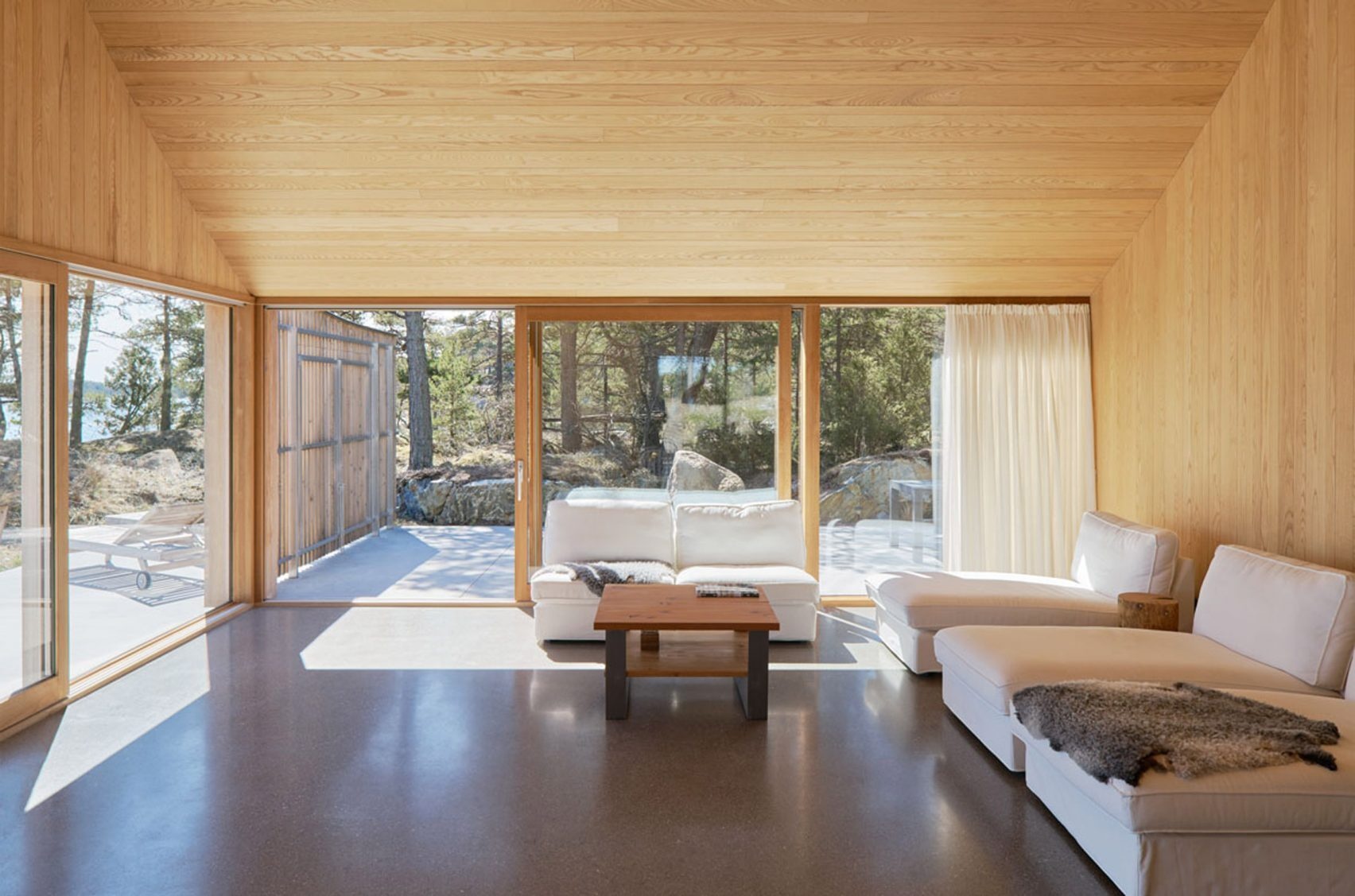
A kitchen that keeps things simple
Next to the living room, the kitchen continues the theme of quiet restraint. Pale wooden cabinets and open shelving blend into the walls, while a light grey countertop keeps things contemporary. It opens onto a smaller terrace, ideal for morning breakfasts surrounded by the scent of pine and sea air.
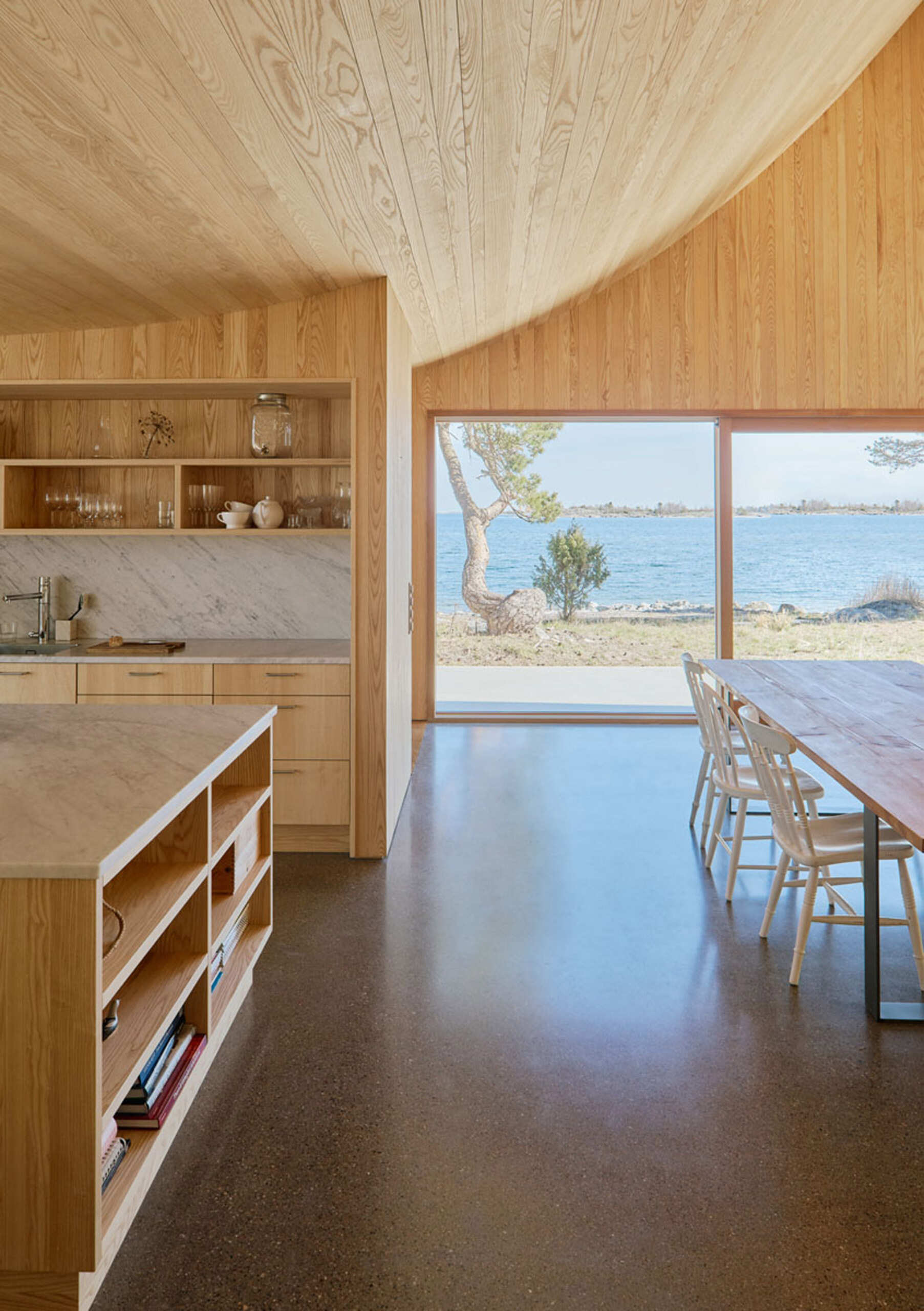
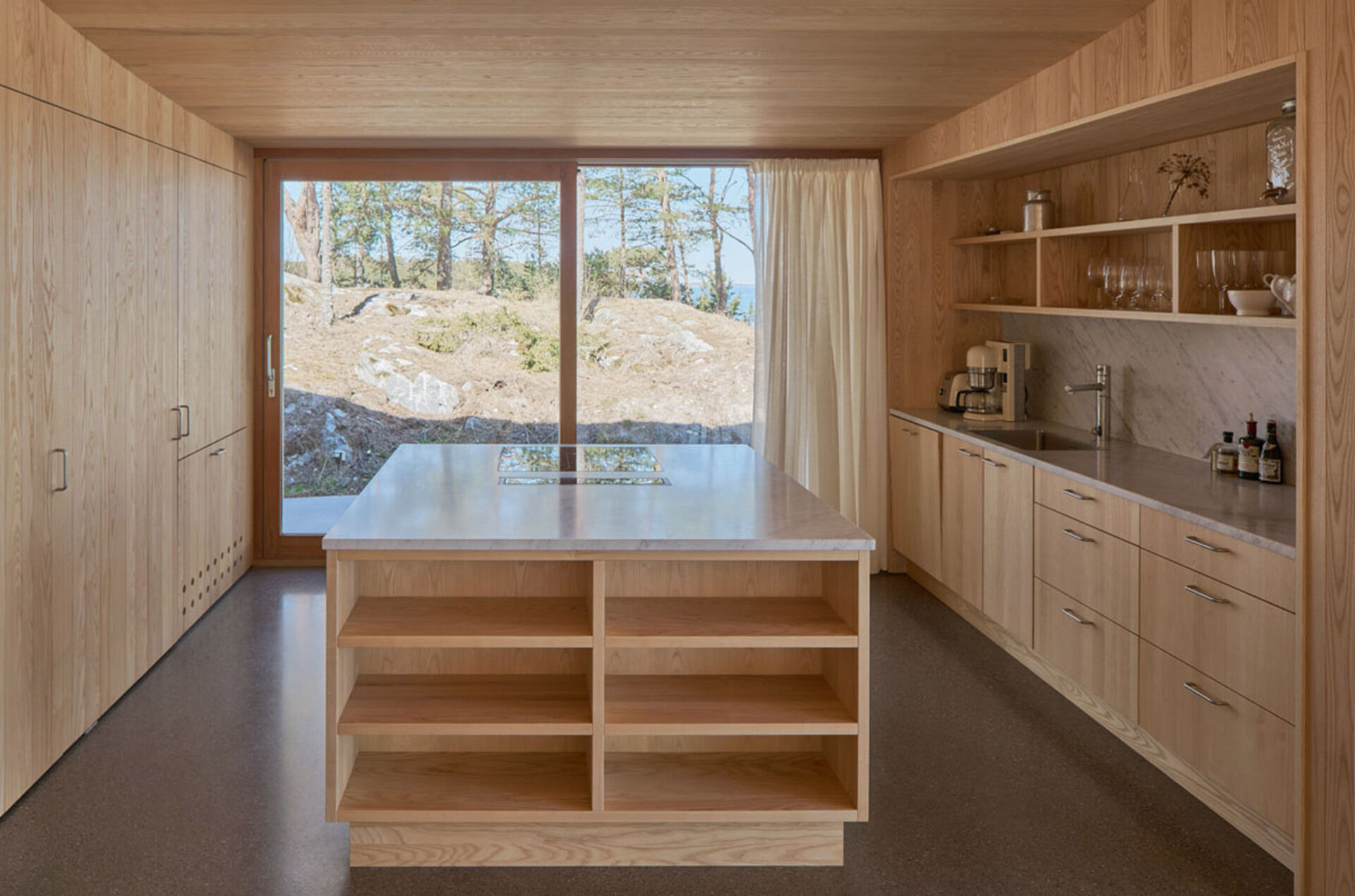
Bedrooms hidden in plain sight
Down a narrow hallway lined in cedar, the bedrooms and bathrooms are tucked discreetly into the home’s western side. The doors blend seamlessly into the wooden walls, a clever detail that keeps the focus on form rather than function.
Inside the bedrooms, the furnishings are minimal: soft bedding, pale wood, and views that pull the eye straight to the outdoors. There’s nothing to distract, nothing to maintain, and that’s exactly the point.
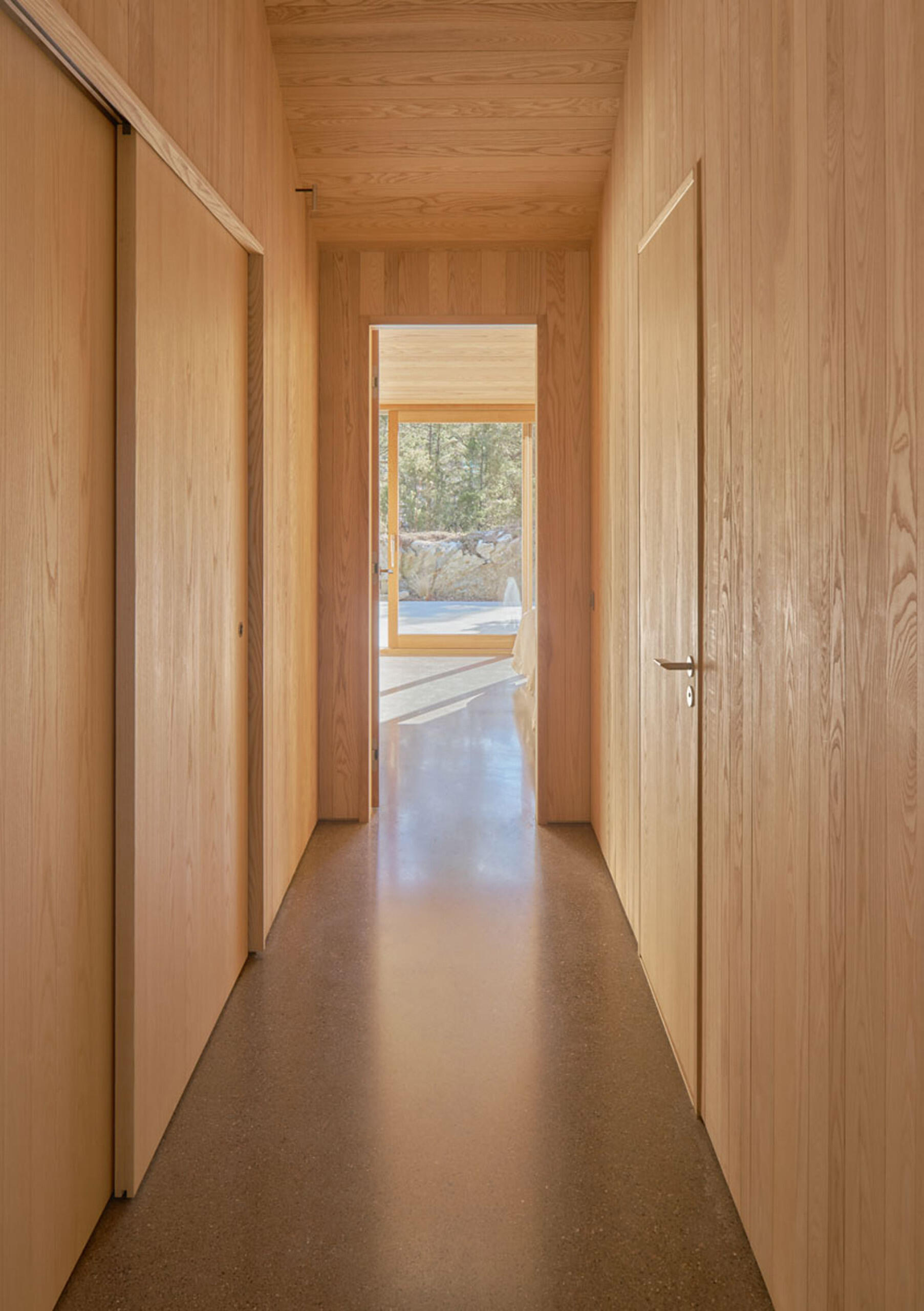
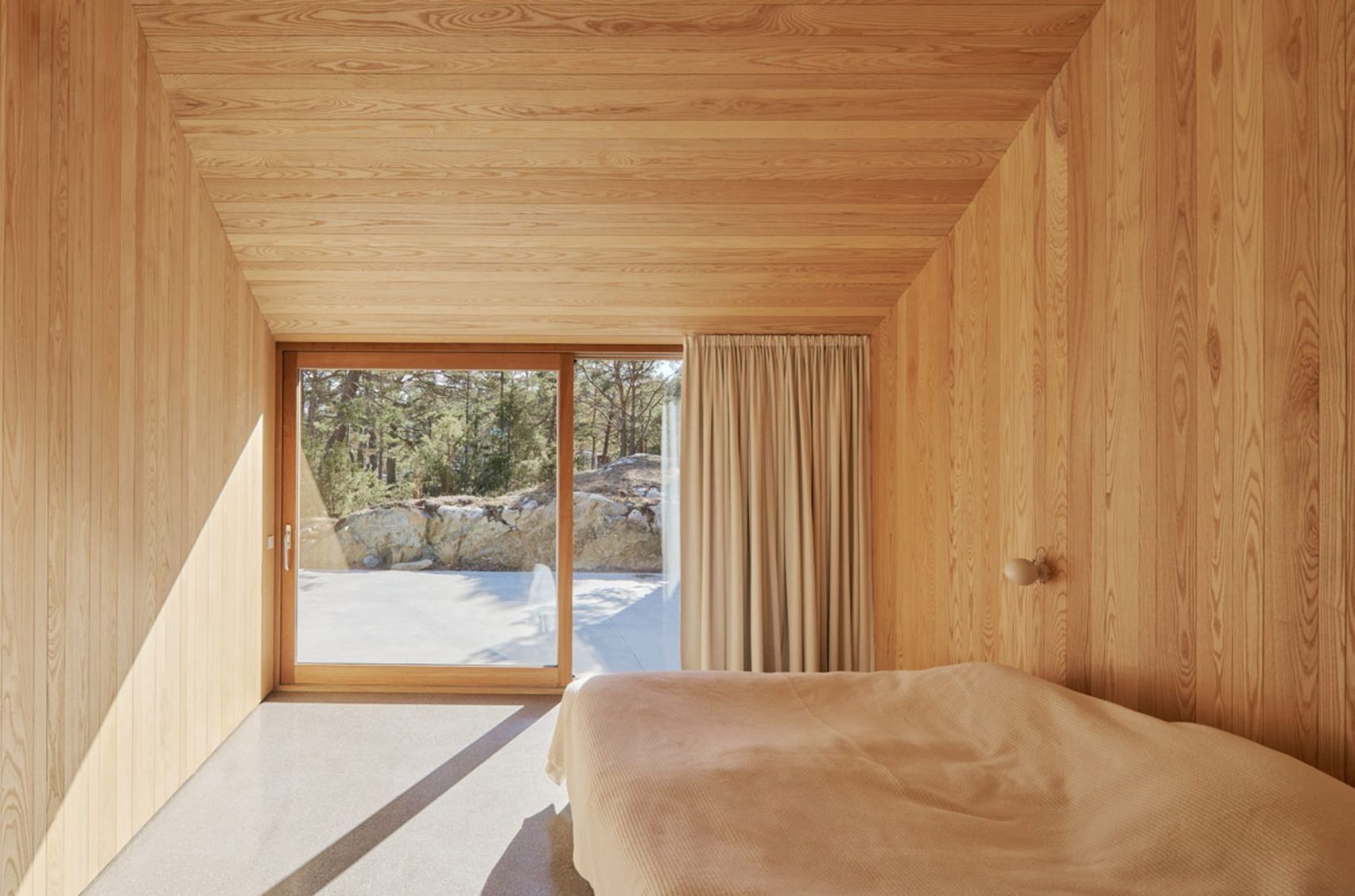
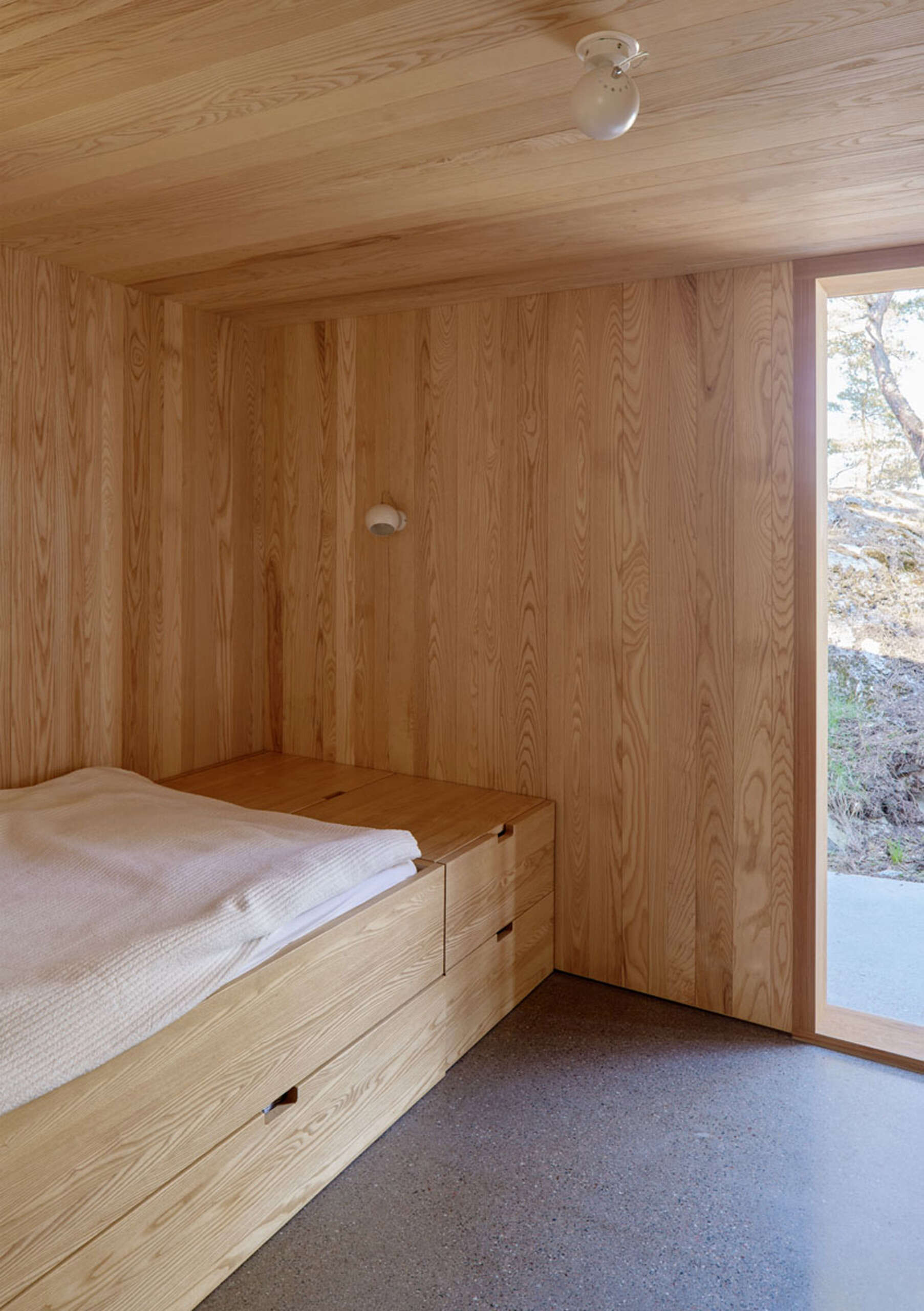
A tent for the modern age
The curved roof and pavilion-like silhouette are more than aesthetic gestures. They nod to Sweden’s architectural heritage, the light, playful pavilions that once dotted the countryside, built for summer leisure and open-air living. Yet here, that tradition is reinterpreted with a sculptural boldness that feels utterly modern.
Constructed almost entirely from wood, the home balances craftsmanship with clarity. Cedar screens filter light, ash lines the interior, and even the structural beams are curved glulam wood. Only a few discreet steel elements are used to support the main facade, proof that simplicity can still be sophisticated.
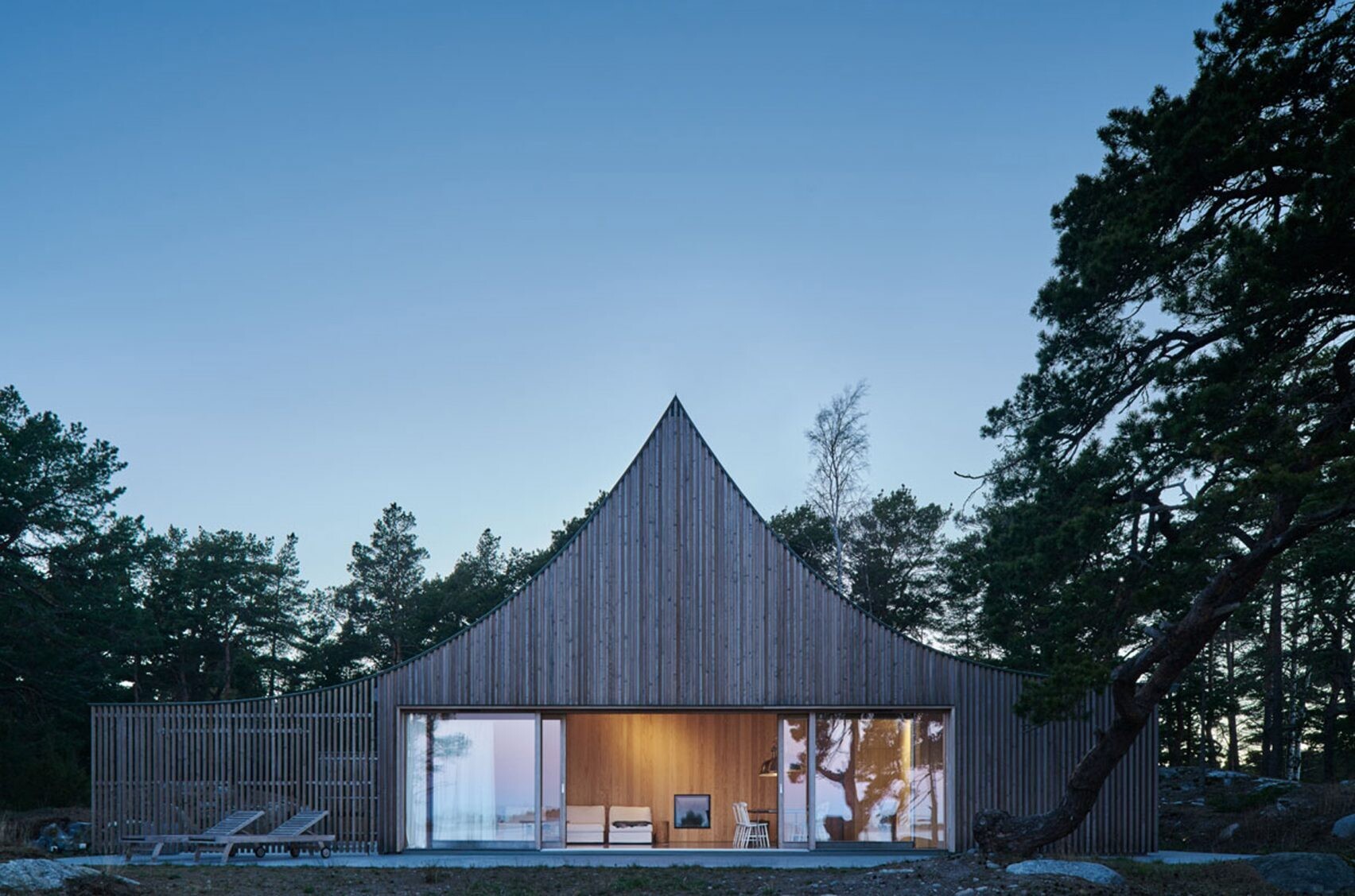
Where simplicity becomes luxury
In a world of complex builds and smart systems, there’s something deeply refreshing about a house that’s as easy to live in as it is to look at. No paint to peel, no metal to rust, no clutter to clean. Just the sound of the sea, the scent of cedar, and the feeling of being completely at ease.
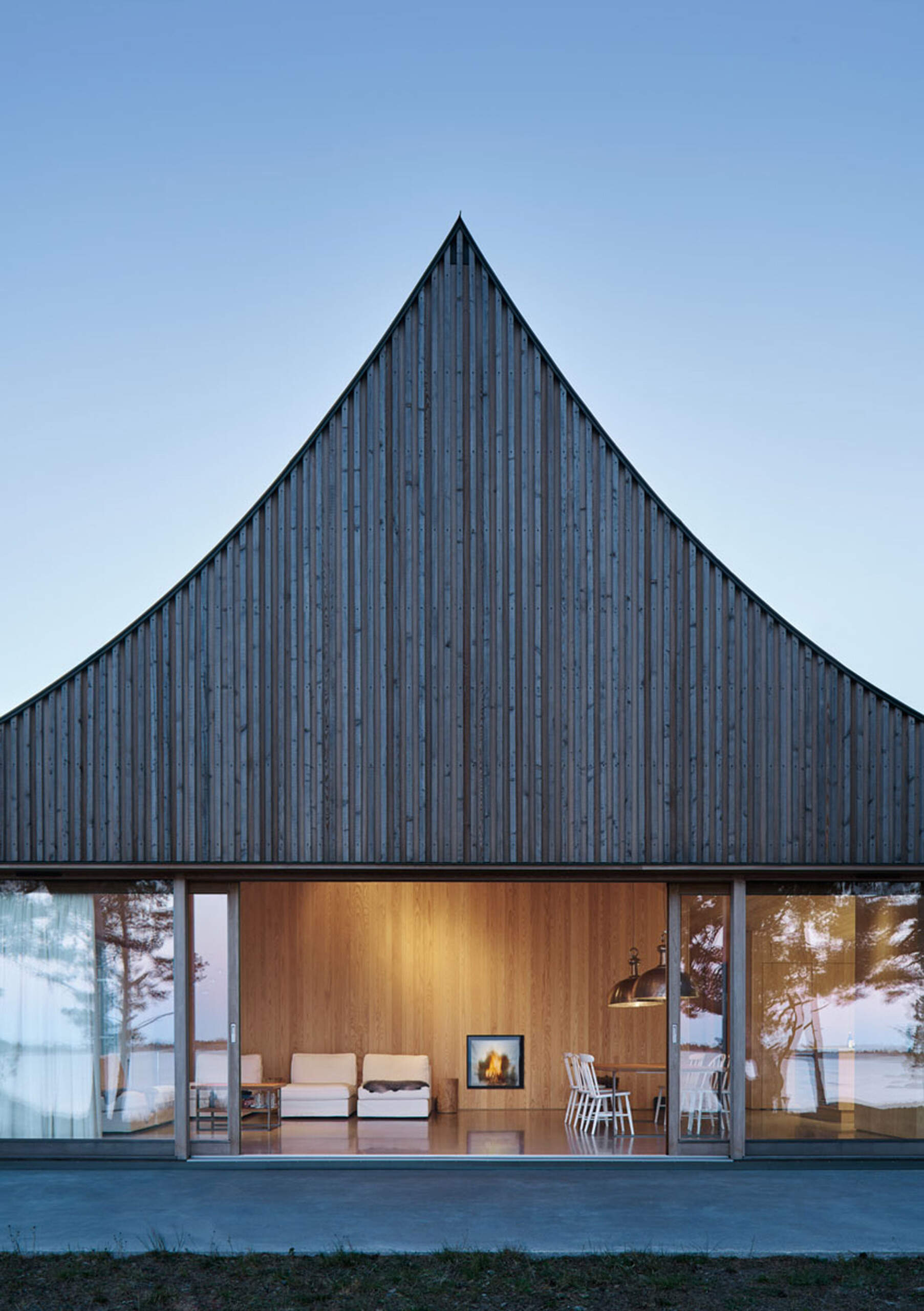
Tham & Videgård have managed to turn a family’s wish for a low-maintenance retreat into something far greater: a timeless, tent-like sculpture perched above the Baltic, where nature and architecture share the same rhythm.